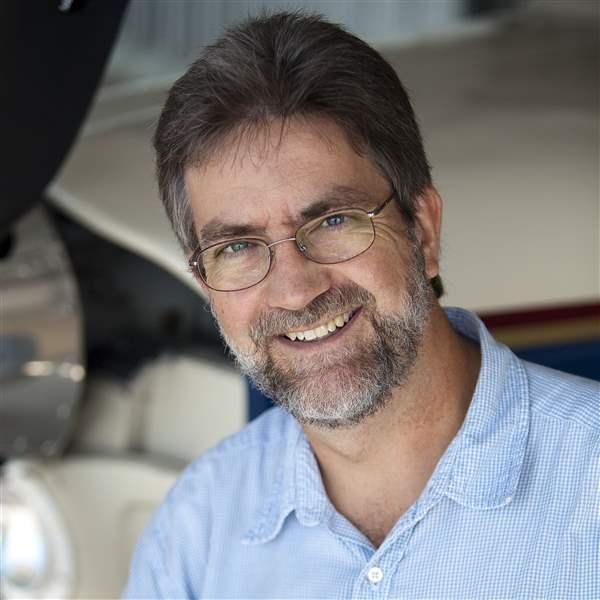Looking for ghost towns in the western United States. Watching gray whales off the California coast. Flying to visit family in Alabama. Transporting patients to receive organ transplants. A couple of months ago I asked you to share how you use general aviation (see "Preflight: Adventure in Fun and Utility," May 2009 AOPA Flight Training), and these were some of your responses.
"Aside from the fun of flying, I originally purchased my Cessna 182R to fly my wife and me from Southern California to our vacation home in the Lake Tahoe area," said Steve Ricketts. "Unfortunately, as circumstances would have it, we never managed to fly there. At the time, we had two large dogs, and it seemed we were always taking the dogs--plus lots of household items--either to Tahoe or from Tahoe. Our load always exceeded the capacity of our airplane."
Over the years, Ricketts has used the airplane for vacations, and for business travel between Southern California and New Mexico. "Although all of this use can be accomplished by car or commercial air travel, my hobby cannot," said Ricketts--who, since 1972, has been exploring abandoned ghost towns across the western United States. "Locating ghost towns from the air has provided me fun and utility from my aircraft that cannot be duplicated by any other means," he said. "By ground vehicle, it takes several hours to get to a possible ghost town site, and until we arrive, we have no idea if anything worth seeing remains. There are usually several dirt roads going in every direction. Driving all of these to their ends could take hours or even days. A 'flyover,' as we call it, can quickly verify if anything is left standing. In less than 30 minutes, we learn what's at the end of all those other roads. For me and my fellow ghost town hunters, locating ghost towns from the air is not only exhilarating, it has greatly enhanced the ground portion of our trips."
Don Fearn of New Orleans earned his private pilot certificate in 1995 and his instrument rating in 2003. He and his wife, Elizabeth, use their Mooney M20J/G primarily for weekend trips, to destinations such as Key West and Sanibel Island, Florida. "Without access to an airplane, we would not be able to enjoy these trips," he said. "Our most frequent weekend getaway is to my mom's house at Gulf Shores, Alabama--three and a half hours by car, but only 50 minutes in the Mooney."
Fearn's sister and her husband recently drove from Jacksonville, Florida, to spend the week with their mother. His mother's sisters, ages 88 and 82, and other relatives also visited. "Only because I am a private pilot were Elizabeth and I able to fly over in the morning, visit all day, and fly back to New Orleans that evening. It was the first time I had seen my aunts and cousin in almost 10 years," Fearn said. "Learning to fly not only fulfilled a lifetime dream, but has added immeasurably to our lives."
I got the attention of Mike Glasney of Santa Rosa, California, when I mentioned Cuyahoga County Airport--he took flying lessons there when he lived in nearby Euclid, Ohio. While he completed all the requirements for his private pilot certificate in Ohio, he didn't refresh his skills and pass the checkride until he moved to Northern California in 2007.
"Since I got my private pilot certificate just over a year ago, my flying hasn't been much for utility, but mostly for fun. I've enjoyed many scenic pleasure flights throughout California, as there is scenery aplenty," said Glasney, who now flies from Sonoma County's Charles M. Schultz Airport. "One of the most memorable flights I had recently was heading north up the gorgeous Pacific coastline on a crisp, clear winter morning," he said. "During the winter and early spring the California coastline is a virtual highway for the gray whale population migrating between Alaska and Mexico. Seeing the pods break the surface as I flew along was unbelievable! It took awhile for me to get to that position, but it was all worth it that morning."
David Grier of greater Cleveland is a student pilot, "once again chasing my dreams that have been deferred several times." Although Grier was on an operating table just over two years ago, receiving a liver and kidney transplant--his second transplant in 10 years--he reports that the FAA has approved his third class airman medical certificate. He's about to start flying lessons at Cuyahoga County Airport.
"The main reason I want to fly is to fly for Angel Flights or any other agency--or start my own, especially to fly transplant patients into Cleveland for their surgery. Think of how motivating this will be for patients to see a pilot who is a transplant recipient, who is now healthy and active," explained Grier, who volunteers several times a week in the Cleveland Clinic Transplant Ward, meeting patients who are waiting or have just gone through a transplant.
"I plan to fly to the 2010 Transplant Games in Madison, Wisconsin, and want to show the 1,500 other transplant recipients what is possible after organ transplant," he added. "But then again, that will be preaching to the choir."
Not surprisingly, these stories are very similar to those being shared on AOPA's GA Serves America Web site. Don't see yourself here? I'm still collecting stories. Drop me an e-mail ([email protected]).



